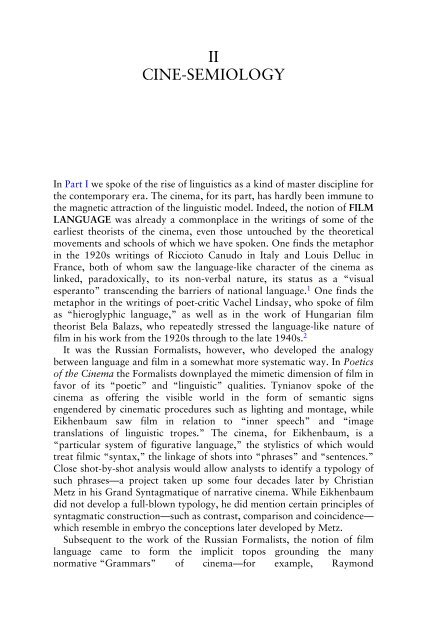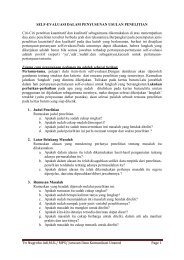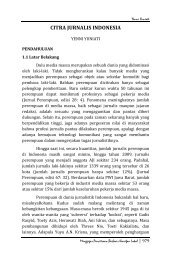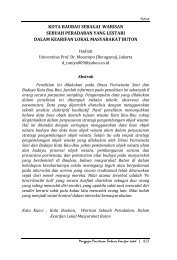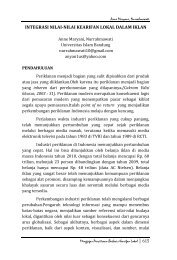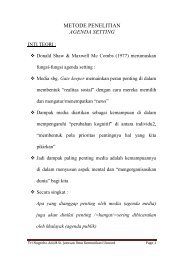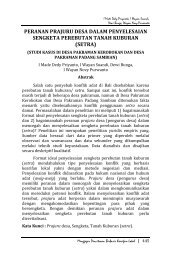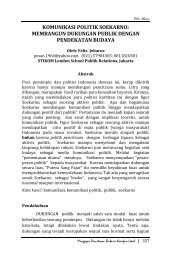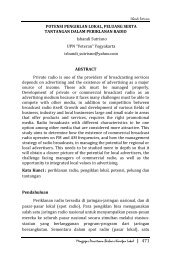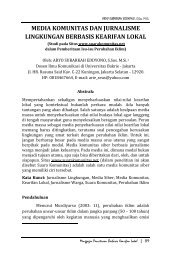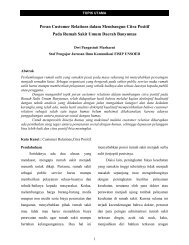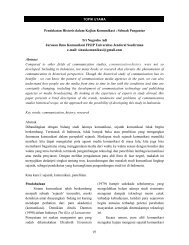New Vocabularies in Film Semiotics
New Vocabularies in Film Semiotics
New Vocabularies in Film Semiotics
You also want an ePaper? Increase the reach of your titles
YUMPU automatically turns print PDFs into web optimized ePapers that Google loves.
II<br />
CINE-SEMIOLOGY<br />
In Part I we spoke of the rise of l<strong>in</strong>guistics as a k<strong>in</strong>d of master discipl<strong>in</strong>e for<br />
the contemporary era. The c<strong>in</strong>ema, for its part, has hardly been immune to<br />
the magnetic attraction of the l<strong>in</strong>guistic model. Indeed, the notion of FILM<br />
LANGUAGE was already a commonplace <strong>in</strong> the writ<strong>in</strong>gs of some of the<br />
earliest theorists of the c<strong>in</strong>ema, even those untouched by the theoretical<br />
movements and schools of which we have spoken. One f<strong>in</strong>ds the metaphor<br />
<strong>in</strong> the 1920s writ<strong>in</strong>gs of Riccioto Canudo <strong>in</strong> Italy and Louis Delluc <strong>in</strong><br />
France, both of whom saw the language-like character of the c<strong>in</strong>ema as<br />
l<strong>in</strong>ked, paradoxically, to its non-verbal nature, its status as a “visual<br />
esperanto” transcend<strong>in</strong>g the barriers of national language. 1 One f<strong>in</strong>ds the<br />
metaphor <strong>in</strong> the writ<strong>in</strong>gs of poet-critic Vachel L<strong>in</strong>dsay, who spoke of film<br />
as “hieroglyphic language,” as well as <strong>in</strong> the work of Hungarian film<br />
theorist Bela Balazs, who repeatedly stressed the language-like nature of<br />
film <strong>in</strong> his work from the 1920s through to the late 1940s. 2<br />
It was the Russian Formalists, however, who developed the analogy<br />
between language and film <strong>in</strong> a somewhat more systematic way. In Poetics<br />
of the C<strong>in</strong>ema the Formalists downplayed the mimetic dimension of film <strong>in</strong><br />
favor of its “poetic” and “l<strong>in</strong>guistic” qualities. Tynianov spoke of the<br />
c<strong>in</strong>ema as offer<strong>in</strong>g the visible world <strong>in</strong> the form of semantic signs<br />
engendered by c<strong>in</strong>ematic procedures such as light<strong>in</strong>g and montage, while<br />
Eikhenbaum saw film <strong>in</strong> relation to “<strong>in</strong>ner speech” and “image<br />
translations of l<strong>in</strong>guistic tropes.” The c<strong>in</strong>ema, for Eikhenbaum, is a<br />
“particular system of figurative language,” the stylistics of which would<br />
treat filmic “syntax,” the l<strong>in</strong>kage of shots <strong>in</strong>to “phrases” and “sentences.”<br />
Close shot-by-shot analysis would allow analysts to identify a typology of<br />
such phrases—a project taken up some four decades later by Christian<br />
Metz <strong>in</strong> his Grand Syntagmatique of narrative c<strong>in</strong>ema. While Eikhenbaum<br />
did not develop a full-blown typology, he did mention certa<strong>in</strong> pr<strong>in</strong>ciples of<br />
syntagmatic construction—such as contrast, comparison and co<strong>in</strong>cidence—<br />
which resemble <strong>in</strong> embryo the conceptions later developed by Metz.<br />
Subsequent to the work of the Russian Formalists, the notion of film<br />
language came to form the implicit topos ground<strong>in</strong>g the many<br />
normative “Grammars” of c<strong>in</strong>ema—for example, Raymond


